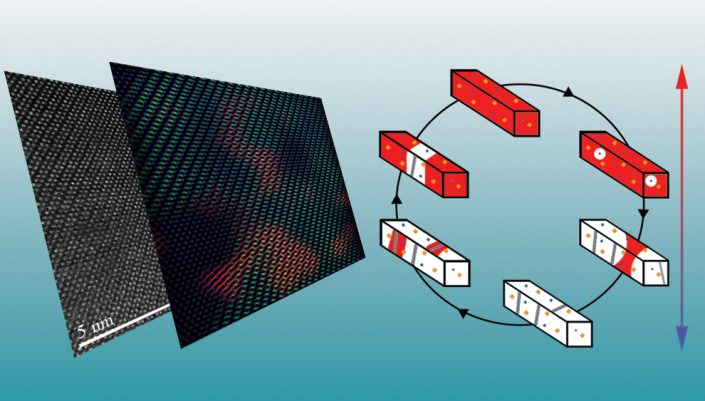Chameleon-like material could take computing beyond silicon, paper says

Image: College of Science
Researchers from Texas A&M University report significant advances in their understanding and control of a chameleon-like material that could be key to developing next-generation computers that are even more powerful than today’s silicon-based machines.
The existing paradigm of silicon-based computing has given us a range of amazing technologies, but engineers are starting to discover silicon’s limits. As a result, for computer science to keep advancing, it is important to explore alternative materials that could enable different ways to do computation, according to Patrick J. Shamberger, assistant professor in the Department of Materials Science and Engineering. Vanadium dioxide is one example.
“It’s a very interesting, chameleon-like material that can easily switch between two different phases, from being an insulator to being a conductor, as you heat and cool it or apply a voltage,” said Sarbajit Banerjee, a professor in the Department of Chemistry and an affiliated member of the Department of Materials Science and Engineering. “And if you think about those two phases as being analogous to a zero and a one, you can come up with some interesting new ways of information processing.”
Banerjee and Shamberger are corresponding authors of a paper describing their work, which was published in the January 2018 issue of Chemistry of Materials.
“Before vanadium dioxide can be used in computing, we need to better control its transition from insulator to conductor and back again,” Shamberger said.
In the paper, the team describes doing just that by adding tungsten to the material. Among other things, they showed that tungsten allows the transition to occur over two very different pathways. The result is that the transition from insulator to conductor happens easily and quickly, while the transition from conductor back to insulator is more difficult.
“Think of it as driving from point A to point B and back again,” Banerjee said. “Going there, you take a superhighway, but coming back, you’re on back roads.”
Essentially the addition of tungsten allows the vanadium oxide to switch quickly in one direction and much more slowly in the other — phenomena that could be exploited in future computers.
“It provides an additional ‘knob’ to tune how you go back and forth between the two states,” said Erick J. Braham, a Texas A&M chemistry graduate student and member of the Banerjee Laboratory who was first author on the paper.
The team has also found that the addition of tungsten allows them to better control, or tune, the different temperatures where the transitions occur.

